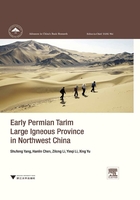
Preface to the Series
As Lao Tzu said, “A huge tree grows from a tiny seedling; a nine-storey tower rises up from a mound of earth.” Basic research is the fundamental approach to foster innovation-driven development, and its level becomes an important yardstick for measuring the overall scientific and national strength of a country. Since the beginning of the 21st century, China's overall strength in basic research has been increasing consistently. With respect to input and output, China's input in basic research has increased by 14.8 times from 5.22 billion yuan in 2001 to 82.29 billion yuan in 2016, with an average annual increase of 20.2%. In the same period, the number of China's scientific papers included in Science Citation Index (SCI) increased from less than 40,000 to 324,000; China rose from the 6th place to the 2nd place in global ranking in terms of the number of published papers. In regard to the quality of output, in 2016, China ranked No.2 in the world in terms of citation in 9 disciplines, among which Materials Science ranked No.1; in the past two years, China ranked No.3 in the world both in the number of top 1% most-cited international papers and the number of top 1‰ international hot papers with global share of 25.1%. In talent cultivation, in 2016, 175 scientists from China were included in the Thomson Reuters Highly-Cited Researchers List (136 of which from the Chinese Mainland), which ranked the fourth in the world and the first in Asia.
Meanwhile, we should also be keenly aware that China's basic research is still subject to great challenges. First, funding for basic research in China is still far less than that in developed countries — only about 5% of the R&D funds in China are used for basic research, a much lower percentage than the 15%—20% in developed countries. Second, competence for original innovation in China is insufficient. The major original science achievements that have global impact are still rare. Most of the scientific research projects are just a follow-up and imitation of the existing researches, rather than brand new novel or pioneering work. Third, the development of disciplines is not balanced, and China's research level in some disciplines is noticeably lower than the international level — China's Field-Weighted Citation Impact (FWCI) in disciplines just reached 0.94 in 2016, lower than the world average of 1.0.
The Chinese government attaches great importance to basic research. In the “13th Five-Year Plan”, China has confirmed scientific and technological innovation as a priority in all-round innovation, and has made strategic arrangements to strengthen basic research. General Secretary Xi Jinping put forward a grand blueprint of making China into a strong power in science and technology in his speech delivered at the National Conference on Scientific and Technological Innovation, and placed emphases on “targeting the world's advanced scientific and technological frontier, consolidating basic research to achieve major breakthroughs in forward-looking basic research and steering original achievements” at the 19th CPC National Congress on Oct.18, 2017. With more than 30 years of unremitting exploration, the National Natural Science Foundation of China (NSFC), one of the main channels for supporting basic research in China, has gradually shaped a funding pattern covering research, talents, tools and convergence, and has taken actions to vigorously promote basic frontier research and the growth of scientific research talents, reinforce the building of innovative research teams, deepen regional cooperation and exchanges, and push forward multidisciplinary convergence. As of 2016, nearly 70% of China's published scientific papers were funded by NSFC — accounted for 1/9 of the total number of published papers all over the world. Facing the new strategic target of building China into a strong country in science and technology, NSFC will conscientiously reinforce forward-looking planning, and enhance the efficiency of evaluation, so as to achieve the strategic goal of making China progressively share the same level with major innovative countries in research output, impact and original contribution by 2050.
The series of Advances in China's Basic Research and the series of Reports of China's Basic Research proposed and planned by NSFC emerge under such a background. Featuring of science, basics and advances, the two series are aimed to share innovative achievements, diffuse performances of basic research, and lead breakthroughs in key fields. They will closely follow the frontiers of basic research developments in China, and publish excellent innovation achievements funded by NSFC. The series of Advances in China's Basic Research will mainly present the important original achievements of the programs funded by NSFC and display the breakthroughs and forward guidance of the key research fields, while the series of Reports of China's Basic Research will show the core contents of the final reports of the Major Programs and the Major Research Plans funded by NSFC to make a systematical summarization and strategic outlook of the achievements in the fields preferred to be funded by NSFC. We not only hope to comprehensively and systematically display the backgrounds, scientific significances, discipline layouts, frontier breakthroughs of the programs, as well as strategic outlooks of the subsequent research, but also expect to summarize the innovative ideas, enhance multidisciplinary convergence and promote the continuity of research in the fields concerned as well as original discoveries.
As an old saying in Hsun Tzu goes, “Where accumulated earth becomes a mountain, there prevails wind and rain. Where running waters gather widely and deeply, there gives birth to dragons.” The series of Advances in China's Basic Research and the series of Reports of China's Basic Research are hoped to become the “historical records” of China's basic research, which will provide researchers with abundant scientific research materials and sources for innovation. It's believed that the series will certainly play an active role in making China's basic research prosper and in building China into a powerful nation of science and technology.

President of NSFC
Academician of Chinese Academy of Sciences
Dec. 2017, Beijing